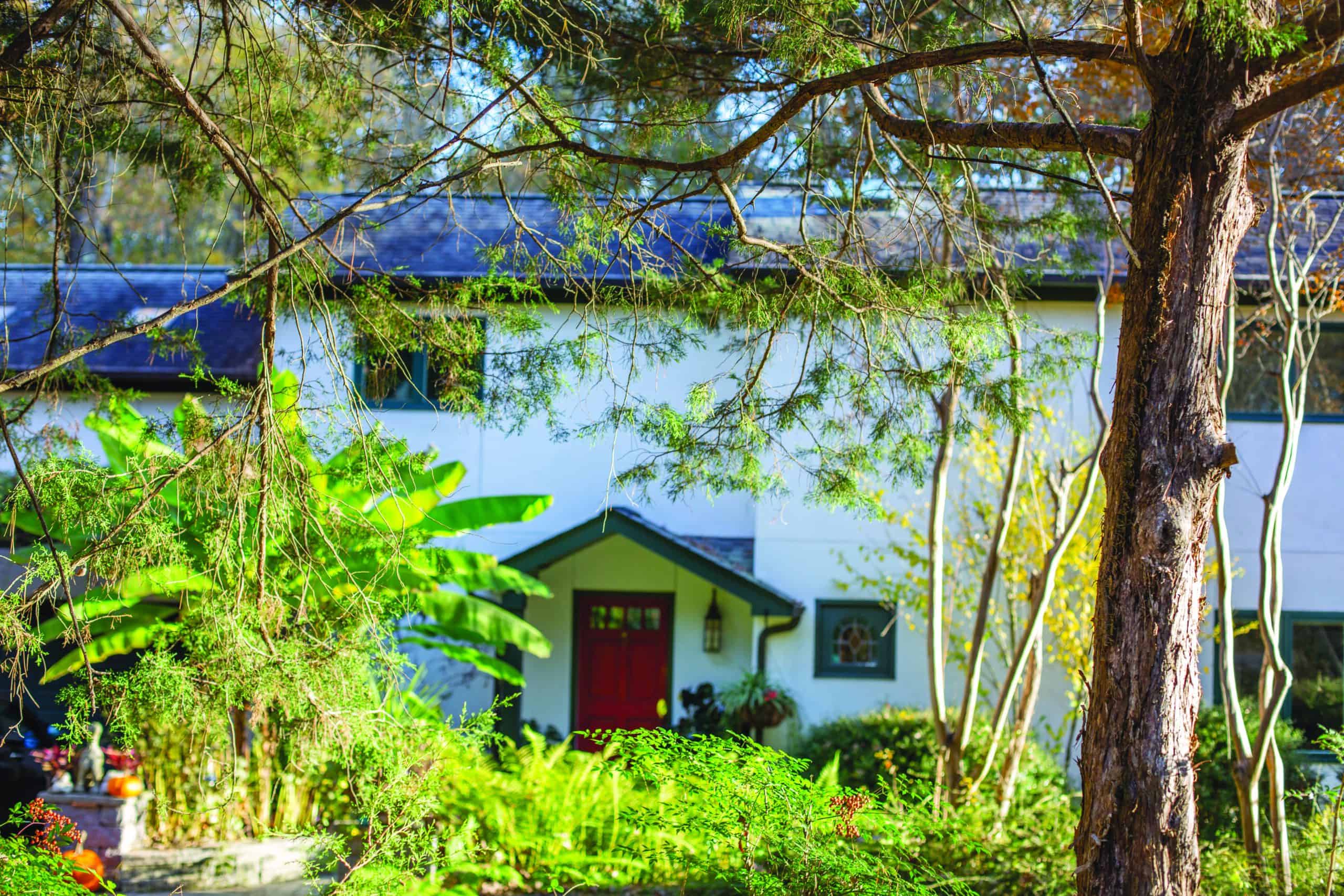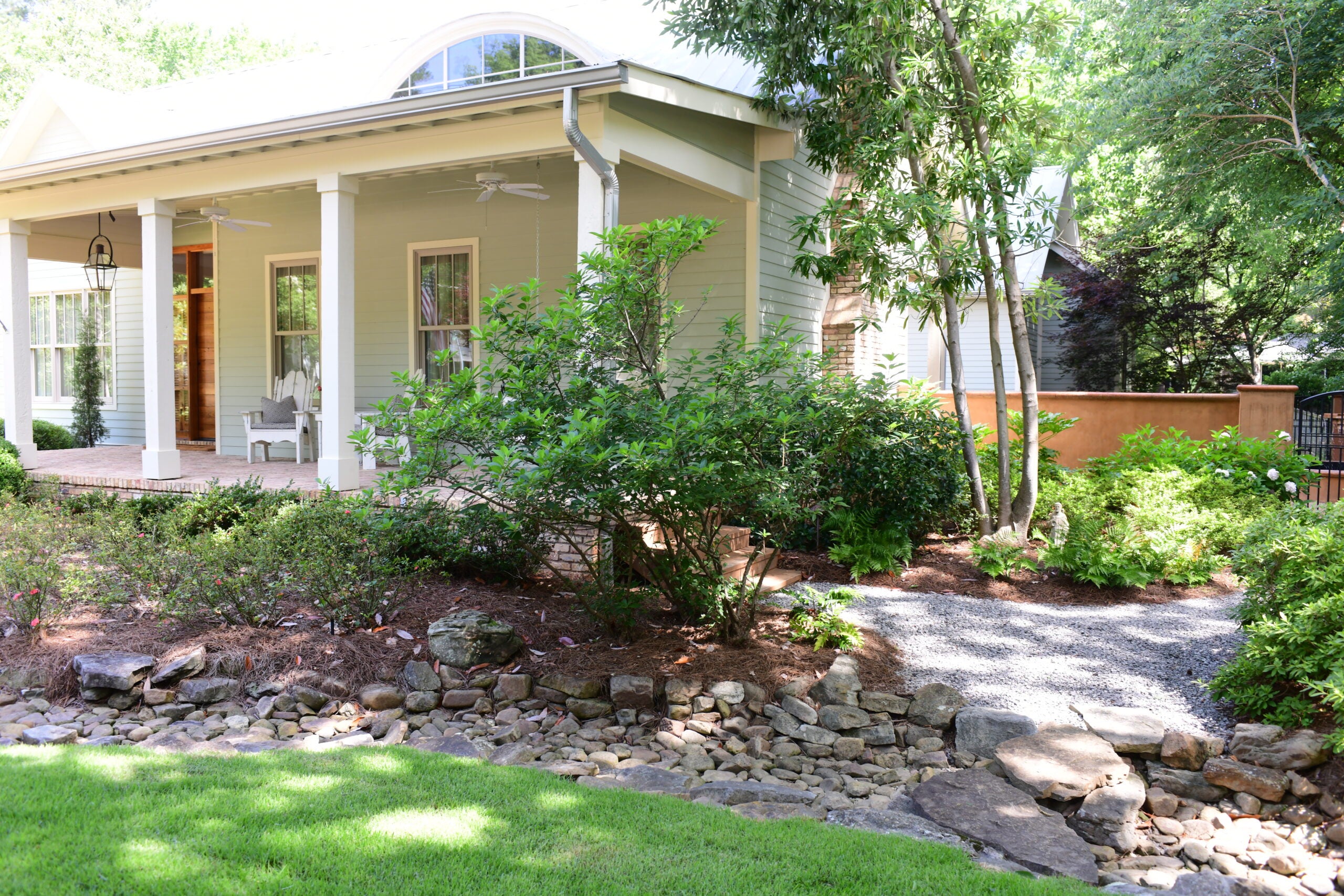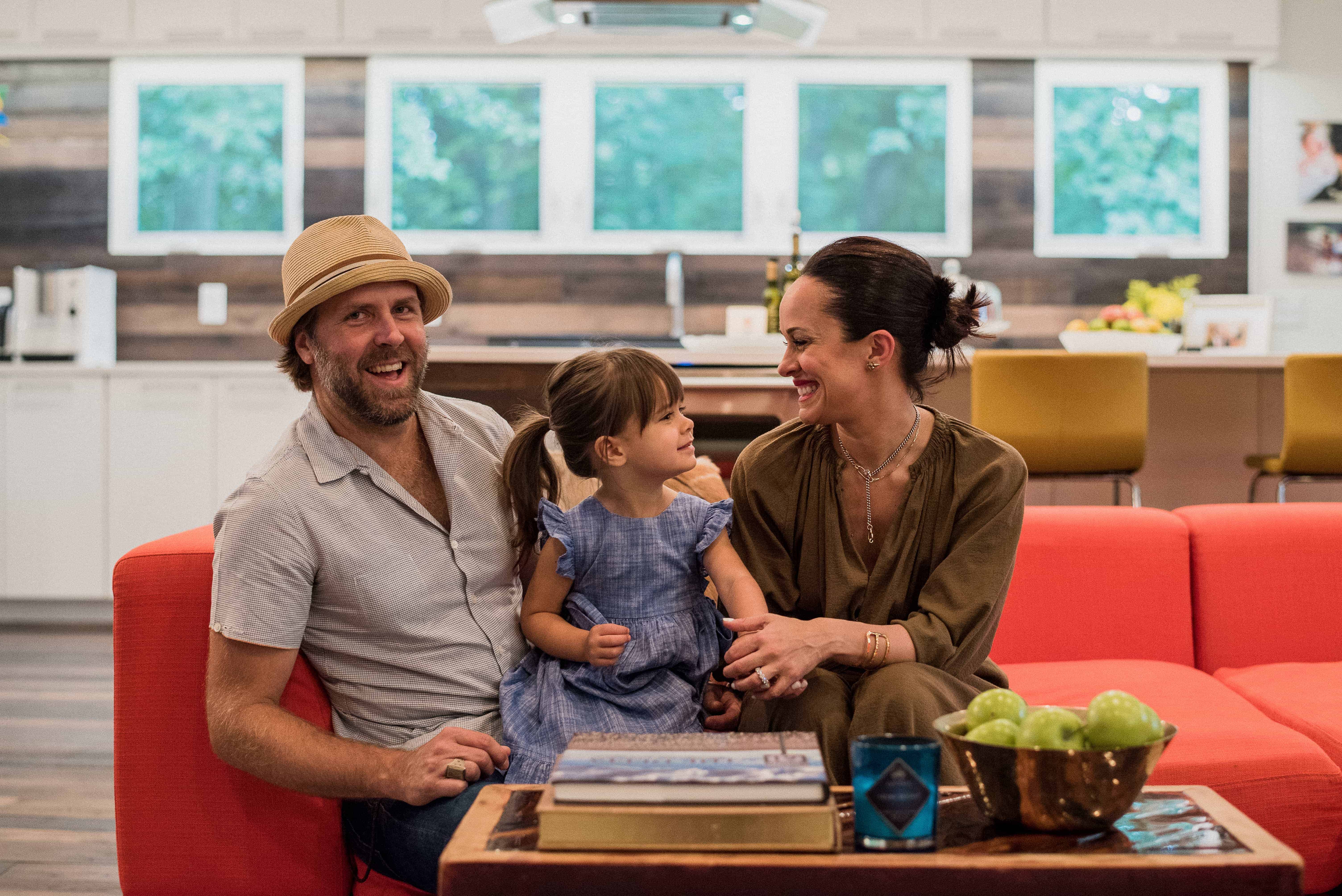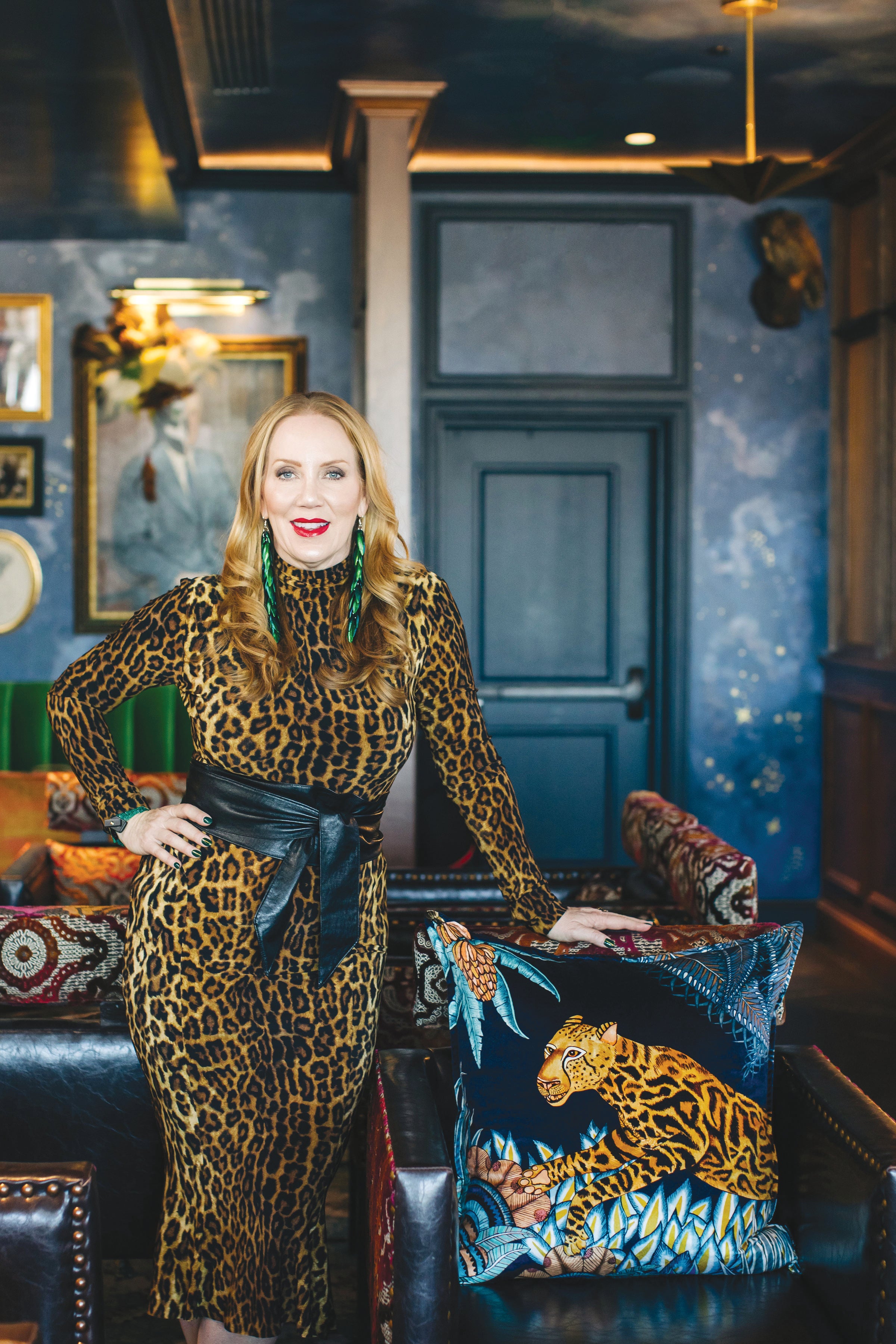Chris Gray grew up in southern Indiana with her six siblings on a street that was populated with other large families. “We had free reign of the avenue we lived on, lots of other children, woods, a quarry and lots of freedom to roam. The 1950s were a different time. No such thing as helicopter parents.” Her father’s tone changed when the family moved to Georgia in 1971. He warned his twenty-year-old daughter, who had taken a summer job at what was then called the Georgia Retardation Centre, “There are a lot of hippies in Atlanta.”
Also working at the facility was Ron Dale, who was “fresh out of Viet Nam” and an aide in the therapies department. The first time Chris laid eyes on him, Ron was a “wild-looking guy with shoulder-length curly hair and a chambray shirt.”
Ron describes it as “love at second sight.”
“My father wasn’t pleased when he came to the house and met the family,” remembers Chris. “Ron wasn’t used to picking up dates from their parents’ house. Dad had on his plaid pants, mom was in curlers, my two-year-old brother was very curious about this person at the door. I’m surprised Ron didn’t turn and run. A year later we were married.”
Nearly forty-nine years later, their love is stronger than ever. They live at a place they call Irondale, which is a 5.6-acre property that is mostly woods. Its maples, hickories, and oaks grow all the way to a stream, where racoons, deer, and foxes sometimes drink. A fence keeps wildlife from a swimming pool that is surrounded by landscaping gems, like spegelia flowers and a viburnum tree. There is a pasture and barn, where a horse lives.
“Our daughter Gabrielle was getting involved with horses and riding,” recollects Chis. “We knew we wanted to build a house and move out to the country so we could have a horse and build our own barn.” So, for months and months they looked for the right piece of land.
Then, one day in 1984, Ron says that they were driving to Billy and Julie Chadwick’s home on Highway 334 for a gathering. “We turned up what is now County Road 411, and there was a for sale sign that was knocked over on some vacant land. Right away we called about it and bought it.”
“When we moved out here the road was gravel, the water was orange, and there were only seven people on our road,” laughs Chris, who five years earlier was a young mother in Baton Rouge, helping Ron decide where they would raise their family.
“I finished graduate school at LSU in 1979 and spent the next several months sending out resumes to every university position I could find,” recalls Ron. “I got a call from Margaret Gorove, who was the chair of the University of Mississippi’s art department,” Gorove asked him to come to Oxford for a visit and then offered him a job teaching ceramics.
The decision was not easy. One reason was that Ron, being from the beautiful mountain town, Asheville, North Carolina, was not particularly impressed with the campus and it’s landscaping. On top of that, the only things Chris knew about Mississippi “were all the negatives from the news.” But there was only one other job offer to choose from, and it was at the University of Northern Iowa. Living there would have been too cold and far away from family for Chris. So, she reminded her husband that “they had two children to feed” and persuaded him to pick Ole Miss.
Once here, Ron was pleased with the support he received from Gorove. “She had an unmatched enthusiasm, energy and vision. She was very supportive of my work and research. I learned a lot from her about how to get things done.” Another person on campus who made a major impact on Ron’s life was painter, Jere Allen. “We became best friends almost immediately. For the next forty-plus years we have spent lots of time together talking about art. His insight and approach to exhibiting was a very important and impactful thing for me.”
Ron also loved teaching. “It was always a pleasure to see someone go from knowing nothing about ceramics to becoming accomplished. Seeing successful acceptance to notable grad programs of undergrad majors. And of course, it was wonderful to see my grad students grow and develop into accomplished artists and professionals.” To many of those students, like Obie Clark, Ashley Chavis, and James Tisdale, Ron was a favorite professor. He was honored Teacher of the Year in 2002.
Chris also found meaningful work at the North Mississippi Regional Center, which her degree in Occupational Therapy from Indiana Purdue University Medical Center prepared her for wonderfully. But when the Dales first arrived in Oxford, she was only interested in a part-time job because Gabrielle was five years old and her little brother Gray was fresh into his terrible twos. She interviewed with Randy Hendrix, the director of NMRC at the time, who informed her that there “were no OT’s north of Jackson in 1980, so opportunities were wide open here and in home health. I worked at the Regional Center on a contract basis for twenty years, then took the Therapy Director position in 2001.” It is a job that requires her to supervise staff and organize the programming for clients that provides them with treatments that help them become more independent in their ability to move and care for themselves. The work is rewarding but challenging.
“We have clients with dual diagnoses that involve mental health and developmental delay. They have behavioral challenges on top of physical challenges. When I began at NMRC, we had a cottage in which most every client was in the bed and didn’t ever get out of the bed. Wheelchairs and seating have come a long way since then. My goal was to get every client out of bed and make sure we didn’t have a person who had to stay in bed all day. It took a few years, but every client since then has had a wheelchair that supports them.”
Chris adds that she took the Director position twenty years ago because “Ron was talking about retiring, and I thought one of us should have a job. My sister-in-law asked me recently why I keep working, I told her, ‘So I can support Ron, and he can make beautiful things’”.
And what beautiful things Ron makes. The bulk of his work takes two forms, functional pottery like cups, plates, and platters, and multidimensional sculptures that combine architecture, furniture, and pottery with visual expression that evokes the memory of masters like Leonardo da Vinci and Vincent Van Gogh. “Making pottery is evolutionary rather than revolutionary,” he explains, “changing very slowly over centuries.” The difference between his two primary modes comes from the intent and knowing “that someone is going to use it usually for a specific purpose.” Whether they be practical or visionary, his works live in homes or are exhibited in museums and galleries around the world.
Ron creates in a studio on the property. “Having my own studio adjacent to our house has allowed me to unify my life, family and career.” He drew the original design and built a model out of foam core. Then, “a friend, Mike McBride, who is an architect, took my ideas and redesigned them into the building it is now. My ideas were a little simpler. Maurice Martin and I built it. The doors were originally to be sliding doors but many years ago I had seen at a restaurant in Austin Texas, some large folding doors that I really liked so I designed mine and Maurice and I built them. The panels are translucent fiberglass which allow some light during the day, but from the outside at night they glow.”
Ron also built a model for the house, which he took to Jack Costantino, who had a business called Solar Struct. “He had moved to Oxford from New York to be with a dying friend. Together we made some design changes, and then along with Maurice, we built it. It was an amazing experience working with them.”
The house is two stories with open balconies that allow it to be passively solar, which means the windows, walls, and floors collect, store, reflect, and distribute the sun’s energy. “The house is positioned 8° east of due south to maximize sun exposure in winter and has wide overhangs to provide shade in summer greatly reducing our electric consumption,” declares Ron, who strives to live as green as possible. “We do the usual efficient bulbs and appliances, keep thermostats at 80° in summer and 62° in winter.”
Chris also believes in keeping energy usage to a minimum. “I rarely use a dryer, always wash a full load, no phosphates allowed, bake more than one thing at a time in the oven, just simple things. No single use plastics if possible and no Styrofoam allowed. I compost all food that isn’t meat and if we use paper plates, only compostable ones. I drive a hybrid and pay the extra tag fee for it.” She emphasizes that the house has “lots of insulation and double paned windows that make it a very tight house. We use a wood stove in the winter that is very efficient.”
Ron notes that, “We have heated with wood our entire marriage.”
Besides being resourceful, the house is also beautiful and home to a carefully curated collection of art, including ceramic works by well-known artists like Robert Turner and Paul Soldner, paintings by Jere Allen and Carlyle Wolfe Lee, and prints by Pablo Sierra and Ke Francis. “Living with art is as essential to a healthy life as eating and sleeping,” affirms Ron.
The walls of an upstairs bedroom are decorated with bright, multi-colored “friendship quilts” that were made for Chris and Ron’s grandchildren, sisters Lucy and Ella Chiniche and brothers Atticus, Lake, and Finn Dale. “They enjoy swimming and sometimes visit the studio. They are absolutely the lights of our lives,” declares Ron, who during the Covid pandemic, when the Oxford schools were shut down, taught the boys art classes. It happened because Gray, his wife, Olivia, and their boys “are our nearest neighbors and were quarantined with us.”
“It was Ron’s idea,” stresses Chris. “Our grandchildren went a long way toward keeping us sane during the lockdown. They were wonderful to have in our lives during such tough times. Ron worked for three months with them every day of the week, one medium after another.”
“They learned drawing, color mixing, painting, collage, and printmaking. I have three potter’s wheels, so they learned to throw pots, glazing and firing. We worked in the woodshop. First, they each made a large glass mosaic object. Then they built a bluebird house, then made model boats. We had an opening exhibit for their parents of all their work followed by a regatta where they raced their boats in the stream behind our house. Finally, they disassembled and re-assembled some electrical tools and electronics.”
Now that the lockdowns have ended, the entire family, including Ron’s mother, Judy Faye, who moved to Oxford in 2012, come to the house at least once a week for a shared meal. “Everyone is so busy,” acknowledges Chris, “and it’s a great time to connect and stay connected. I hope not having to cook at least one meal a week makes life a little easier for our Gray, Olivia, Gabe, and her husband, Paul.” Chris admits, “I am not fast at anything I do, so it takes me all morning to get ready for lunch. I send everyone home, Ron back to the studio, and clean up. It’s my Sunday thing.”
Chris’s selflessness is a quality that is cherished by all in the Dale family, especially Ron. “She has been my best friend, my best supporter, and my constant companion. I would have no career without her. Chris is the most wonderful person I’ve ever known. She is always positive, upbeat, compassionate, and totally unselfish. She’s an amazing mother, grandmother, and especially wife. I would’ve fallen in love with her at any point in my life that we would have met from first grade on.”
To that Chris smiles and asserts, “Ron is the light of my life always has been. He is supportive of anything I want to do.” Generosity and gratitude flow like rivers through Irondale, which she feels has been a “joint vision. I love our privacy and our enclave that we can escape to and not have to go back to town for anything. My goal is to not leave the place Saturday and Sunday.”
Ron, who loves not having a neighbor in sight, agrees. “We have always shared the same vision and philosophy of life.”








